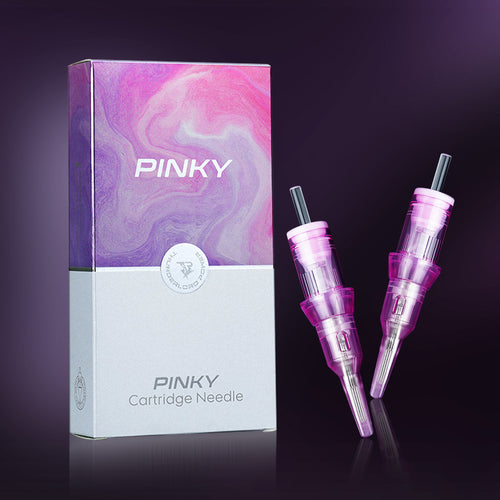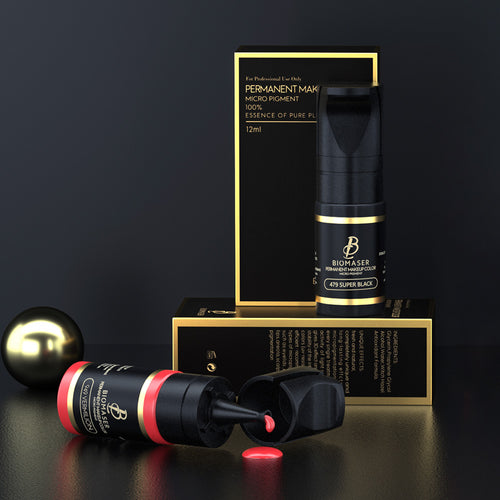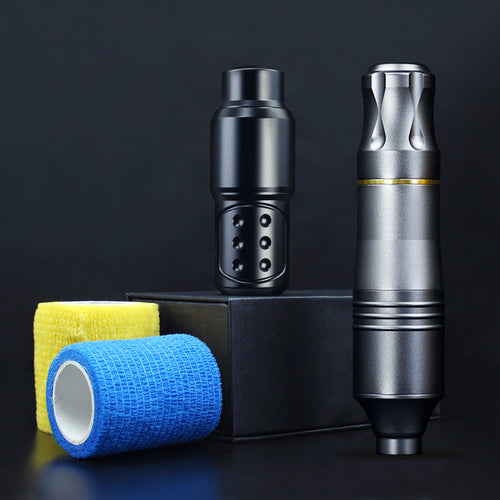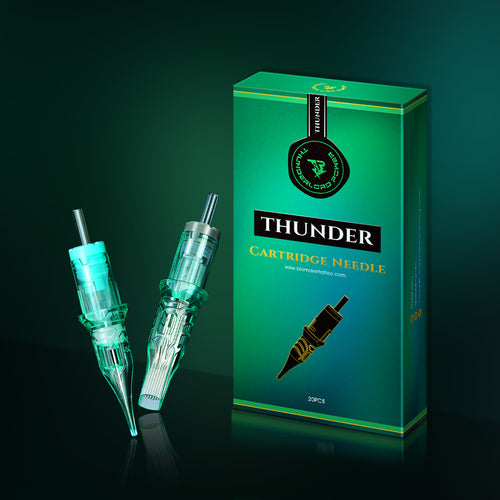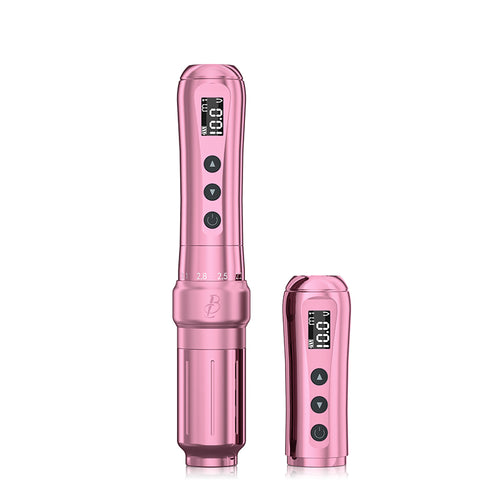Unveiling the Secrets of Microblading Needles: Achieve Flawless Eyebrows with Precision
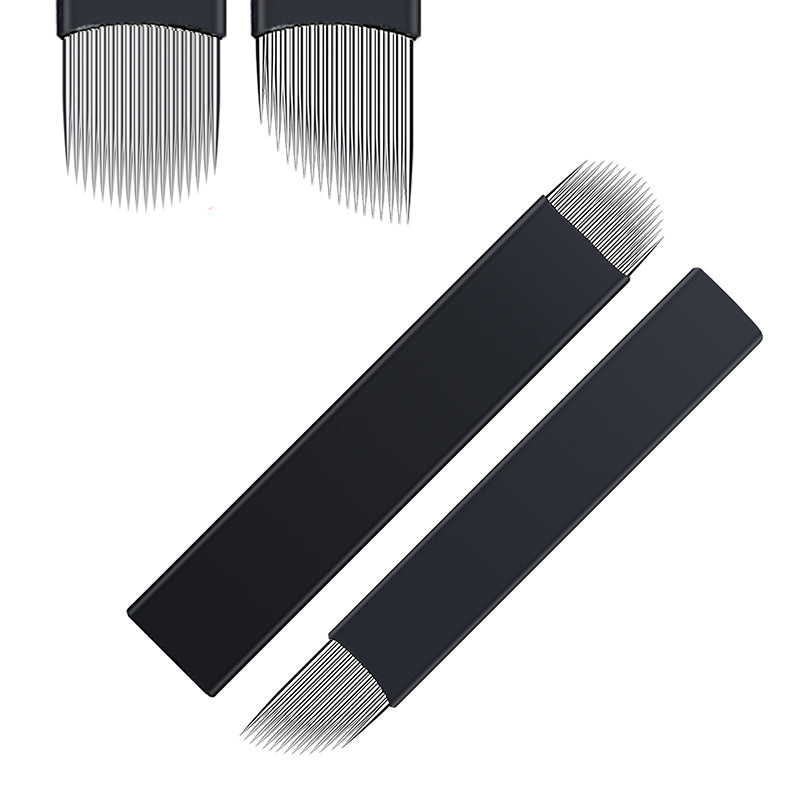
Microblading, or eyebrow embroidery, is a popular semi-permanent makeup technique for shaping and filling brows. The tools and needles play an important role in achieving the desired results. A deep dive into the world of microblading needles is essential for understanding how to achieve flawless brows.
Understanding Microblading Needles
Microblading uses tiny needles to deposit pigment into the dermis, mimicking the look of natural hair strokes. The needles vary from the standard tattoo needles as they are specifically designed for microblading. They are shorter in length with thinner, finer tips to allow for more control and precision. The needles normally range from 0.15 mm to 0.25 mm in diameter and between 0.7 mm to 2.5 mm in length. The thinner the needle, the more precise the line work can be.
Tattoo Machines vs. Permanent Makeup Kits
Tattoo machines use thicker needles that move at higher speeds to deposit large amounts of ink for filling in areas. This results in a bolder, less precise outcome.
Permanent makeup kits offer thinner, shorter needles that operate at slower speeds for a lighter stroke. This allows for more precision and control for procedures like eyebrows and eyeliner. However, permanent makeup kits still lack the ultra-fine needles and rotational stroke of true microblading pens.
- Tattoo needles range from 0.2 mm to 0.45 mm in diameter, while permanent makeup needles range from 0.16 mm to 0.5 mm.
- Tattoo machines typically move at speeds of 4,000 to 10,000 RPM, while permanent makeup machines move at 3,000 to 6,000 RPM.
- The wider, deeper strokes of tattoo machines are meant for filling in areas, while permanent makeup kits focus on creating fine lines.
- Permanent makeup kits often feature rotation capabilities that tattoo machines lack.
In summary, while both tattoo machines and permanent makeup kits can be used for semi-permanent makeup, only permanent makeup kits are designed specifically for procedures like eyebrows and eyeliner.
Permanent Makeup Kits vs. Microblading Kits
Though permanent makeup kits offer thinner needles and slower speeds, microblading kits take precision and control to the next level.
- The diameter of microblading needles typically falls between 0.1 mm and 0.28 mm, while the needles used for permanent makeup tend to be slightly larger, with diameters ranging from 0.2 mm to 0.35 mm.
- Permanent makeup machines typically move at 3,000 to 6,000 RPM, while microblading machines move at 10,000 to 35,000 RPM.
- The rotational stroke weight of microblading pens is engineered specifically for replicating natural hair strokes, which permanent makeup kits lack.
- Microblading pens provide a lighter stroke and greater visibility due to their ultra-thin needles, allowing technicians to create the most realistic and precise brow shapes.
In summary, while permanent makeup kits allow for some precision and control, only true microblading pens with their ultra-fine needles, rotational stroke technology, and featherlight touch can achieve flawless, natural-looking brows.
Benefits of Using High-Quality Microblading Needles
Microblading needles hold the key to sculpting naturally perfect brows that rival those born with them. When wielded by an expert technician, the finest microblading needles unlock infinite possibilities for transforming brows - and the faces of every satisfied client.
Precision-Engineered Precision
Finely tuned for maximal control, the thinnest needles allow technicians to create strokes that mimic hair down to the follicle. Through minute maneuvering, they deposit pigment exactly where needed to shape and fill each brow delicately and deliberately.
The Secret to a Salón-Quality Finish
Like finely honed surgical instruments, the sharpest microblading needles glide through skin smoothly and evenly. Their stainless-steel construction resists wear, maintaining an impeccable edge visit after visit to deliver a luxuriously professional, spa-like experience.
Key to Masterful Brow Makeup
Only the highest caliber microblading needles provide the featherlight touch required to model brows, so naturally, they appear to have grown that way. The reinforced tips ensure lines remain defined and strokes flawlessly blended for a masterful, undetectable effect.
In the hands of an expert technician, microblading needles of the finest engineering unlock infinite possibilities for transforming brows - and the faces of every satisfied client.
Factors to Consider When Choosing Microblading Needles
Several factors must be weighed when purchasing microblading needles to ensure optimal performance and client comfort.
- Needle size - Thinner needles create more defined lines
- Sharpness - Dull needles can cause damage and trauma to the skin
Blunt needles pull and tear at the skin, causing pain and inflammation.
- Coating - Coatings minimize ink sticking to the needle
Coatings allow needles to glide smoothly, minimizing friction and trauma.
Ultimately, choosing needles based on size, material, coating, and sharpness will make all the difference in the precision and comfort of the final brow design.
Tips for Proper Needle Usage and Maintenance
Following best practices for needle usage and sterilization is paramount for avoiding infections and damage.
- Sterilize needles thoroughly before and after each use
Proper sterilization between clients eliminates bacteria and prevents cross-contamination.
- Apply a coating of ink before inserting it into the skin to minimize friction
A thin coat of ink lubricates the needle, reducing friction during insertion.
- Replace needles often, at least after 10-15 clients
Dull or worn needles become less precise and more likely to cause skin trauma.
Overall, adhering to thorough sterilization procedures and frequently replacing needles will ensure that microblading achieves the subtle, flawless results clients desire.
Conclusion
Microblading needles play an integral role in the success of the procedure. Understanding the differences between tattoos, permanent makeup, and microblading needles allows technicians to provide clients with the most natural and precise results. Choosing the right needle size, material, and sharpness, along with proper usage and maintenance techniques, can make all the difference in flawless, natural-looking brows.




